Pattern and texture are an often-overlooked part of the creative food photographer’s palette. But in order to get the most out of using repeat patterns, you really need to become tuned-in to them. In this post we’re going to cover some tips for becoming more pattern-aware, and suggest ways you can incorporate more pattern and texture into your food photography on a daily basis.
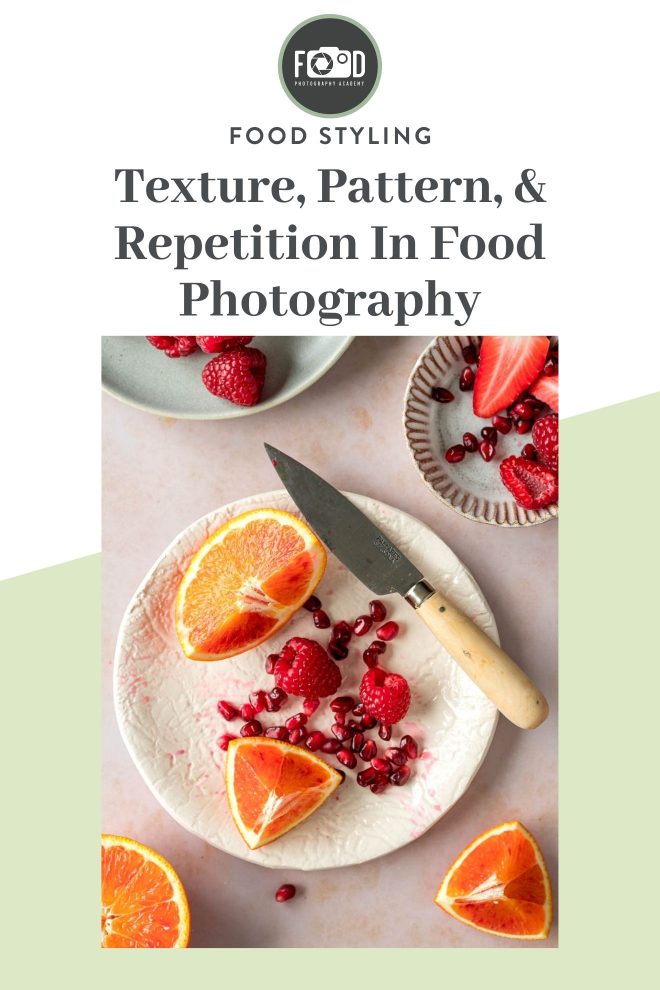
Patterns and textures are a part of our natural world, and that of course includes the food we eat. In fact they are almost unavoidable when photographing certain foods; just think of the texture of bread, or orange skins. And what about the repeated patterns created by rice, pasta, nuts, or berries when seen all together?
Because patterns and textures of this kind are so common, you’ve likely already photographed them before; even if you may not have paid much attention to them at the time.
What I want to talk about in this post, though, is making much more conscious use of pattern and texture in our photography for creative effect.
The first step, then, is simply learning to take notice of patterns and textures when we see them. Not only pre-existing patterns, but potential patterns too; because a big part of successfully working with patterns is learning to create them yourself.
Before we get to that though, let’s take a look at a few common types of pattern that you’ll often see in a food context, and the differing approaches you can take to photographing them.
Types of Pattern in Food Photography
Macro Pattern
The easiest patterns to photograph are simply those that naturally exist in food already. Think of the texture of biscuits, the pits of citrus peel, the rugged landscapes of deep fried batter, or the psychedelic fractals of Romanesco broccoli. For this kind of shot you really need to get in close, so a macro lens is fairly essential.
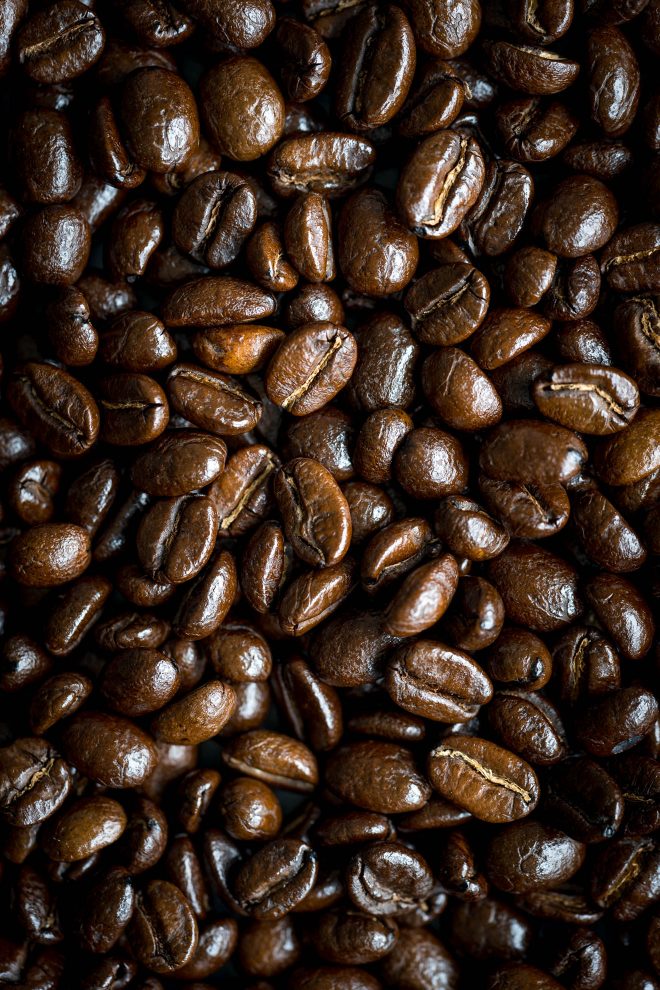
In this shot of some coffee beans, the pattern is present in the shape of the beans, in the sense that they’re all the same shape, with small variations, but their chaotic appearance breaks the pattern a bit, creating a composition that’s still interesting.
Regimental Pattern vs Random Repetition
Some patterns are made up of individual elements that are all slightly different to each other but look the same when viewed en masse; like soldiers on parade.
For example, think of bricks: seen together in a wall, bricks look almost identical and are all positioned in the same way. But examined individually at close proximity, each brick will reveal various differences. You could create a similar result by photographing chocolates, biscuits, or any mass-produced foods lain out geometrically. This will create a very disciplined and almost mathematical effect.
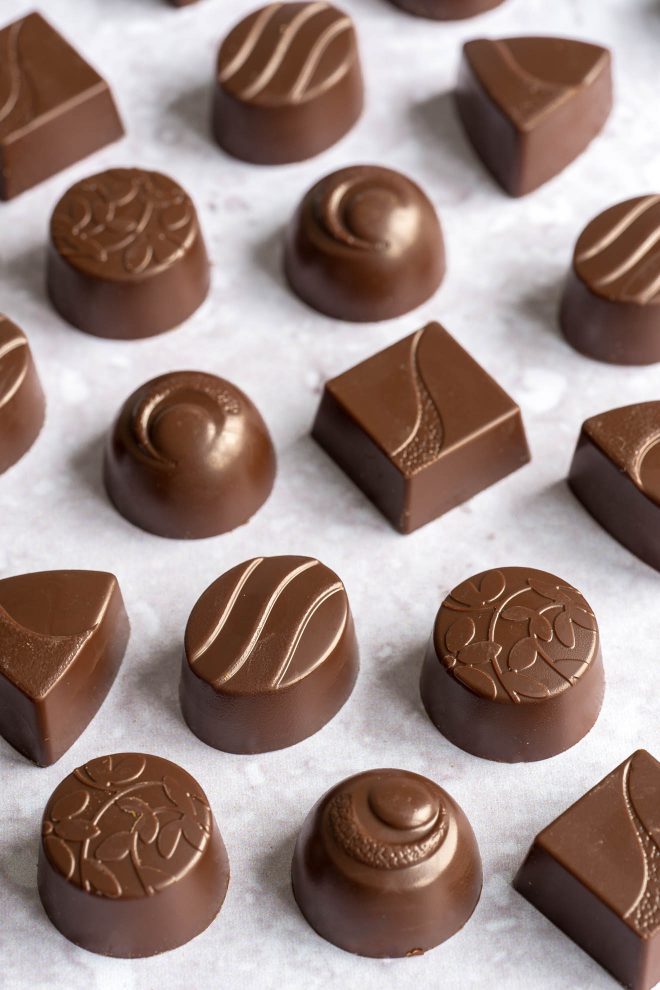
The geometric pattern in this photo adds an interesting compositional element, utilising pattern to create something intriguing.
Then there are patterns that are made up of lots of quite different objects, yet which take on a kind of uniformity when they are all viewed together. For example, we might photograph a kiwi, a green pepper, an avocado and zucchini together.
Other than the fact that they are all roughly the same colour, seen individually we’d most likely concentrate on the differences between them in shape and texture. But now photograph 20 kiwis, 20 green peppers, 20 avocados, and 20 zucchini all mixed up, and suddenly it’s a uniform green pattern made of different shapes.
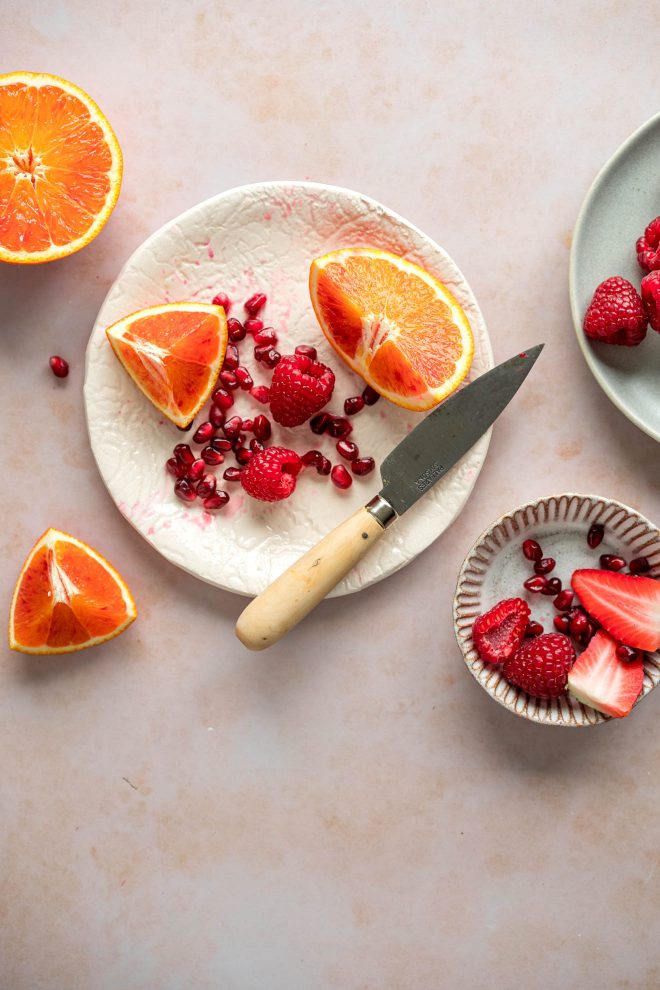
In this photo, the relationship of the colours in every element of the photo creates a pattern and relationship between the elements. It brings them together, creating a kind of uniformity between them. Pattern doesn’t always have to mean repetition.
Breaking the Monotony
Harmony can be great for certain types of shots. But too much harmony may easily slip into monotony, and that can get boring. By nature, patterns tend to be predictable; and just as with a story or a movie, if we know exactly what comes next, we’ll lose interest.
That’s why it can be good to play with the viewer’s expectations, grabbing their attention by breaking the monotony of the pattern with an unexpected twist; a single surprise element. This usually works best when the odd-item-out is strategically positioned in the frame using compositional techniques such as the rule of thirds, or the rule of odds.
In these images, it’s clear which one is more interesting, right? Not only does the cut open fig add some interest to this monotonous pattern, but it also adds a new perspective and texture to the image, allowing you to see the inside of the fig. It’s a simple trick, but it certainly makes this photo more interesting.
Graduated Pattern
Another way of holding the viewer’s interest is to make the pattern subtly change as it progresses. For example, a pattern that maintains the same form, but alters in terms of colour or shade when moving from left to right.
Evolving Pattern
Alternatively, you can make patterns that stay the same colour, but transform or evolve in shape as they move across the image. This could be as simple as using perspective to create a receding pattern, with each row appearing smaller than the last; or as complicated as baking a series of biscuits that subtly transform their shape from row to row. So they might start out as round biscuits on one side of the shot, and end up as stars on the other.
Repetition
Repetition is a great technique when you have lots of subjects that are similar, like cupcakes. The more you repeat something in a photo, the more importance it gives to that element.

When you’re including lots of similar subjects in a photo, try and utilise other composition techniques like the rule of odds and composition guides to help you with interesting placement.
Tips for Creating Better Repeat Patterns
Raw Materials
As food photographers, there are so many raw materials we can choose from when creating patterns; beans, pulses, fruits, leaves, spices, biscuits, candies…with a little imagination, pretty much any kind of ingredient can be turned into a pattern. Even some finished foods or dishes will work too. Try to get in the habit of looking at food and ingredients as potential starting points for making patterns.
The Magic of Patterns
Entirely filling the frame with a repeated pattern has the effect of removing all context or sense of scale. And without these familiar points of reference, even very ordinary objects can take on quite an unusual or fantastical appearance. It’s probably for this reason that there almost seems to be something magical about repetition. Photograph one apple, and it’s just an apple. But shoot lots of apples together, and suddenly the image will become much more unusual and attention-grabbing.
Emphasizing Pattern and Texture
Sometimes when making a pattern out of quite ordinary items, it can help to flatten the perspective. This will create a more graphic and uniform look so that individual objects become less recognizable. Usually the best way to do this is by using a longer focal length lens. Something like an 80mm or beyond will do the trick.
Another way of making objects appear more like a pattern is to light them with quite hard lighting. This will create strongly defined shadows, making objects appear more graphic and less natural looking.
You can also play with the contrast between patterned parts of the image, on the one hand, and areas of solid color on the other. And remember that you don’t need to stick to using just one pattern in a shot; go for a maximal effect by combining one pattern with several others.
Your patterns don’t necessarily need to be made out of food either. Not patterns of things, but patterns on things; strongly patterned tablecloths, plates, napkins and other props can add real interest to otherwise lifeless shots.
This works particularly well when you have a very plain and neutral dish that you can contrast with a really busy background. Alternatively, make playful use of backdrops that are very similar to the patterns on the food, creating an almost camouflaged effect.
Related: Putting Together a Home Food Photography Studio: Props, Backgrounds, and Storage
Final Thoughts
Using pattern and texture can be a great way of adding extra interest and excitement to your food photography. Even though we are surrounded by subtle patterns in our food and ingredients, to make the most of patterns in our food photography we really need to become accustomed to looking for them, and then pushing them to the fore. Once you start noticing them, though, you’ll likely find you can’t stop.
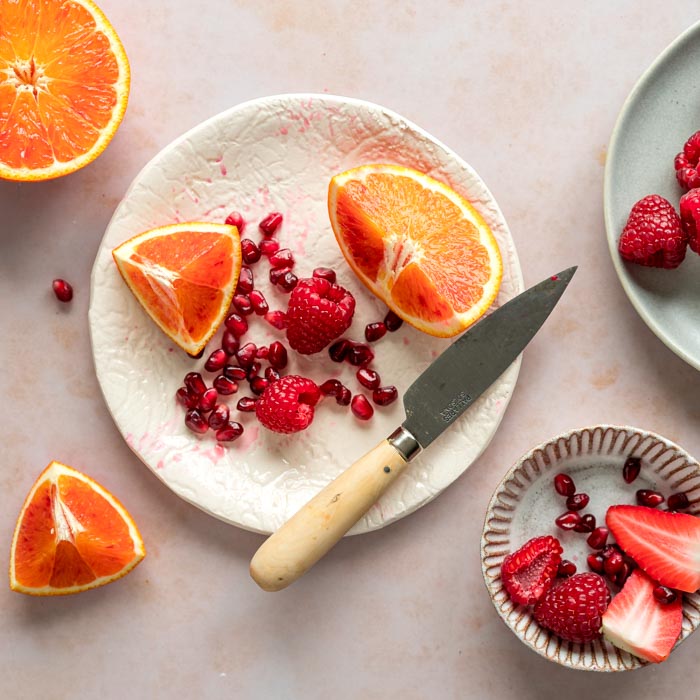
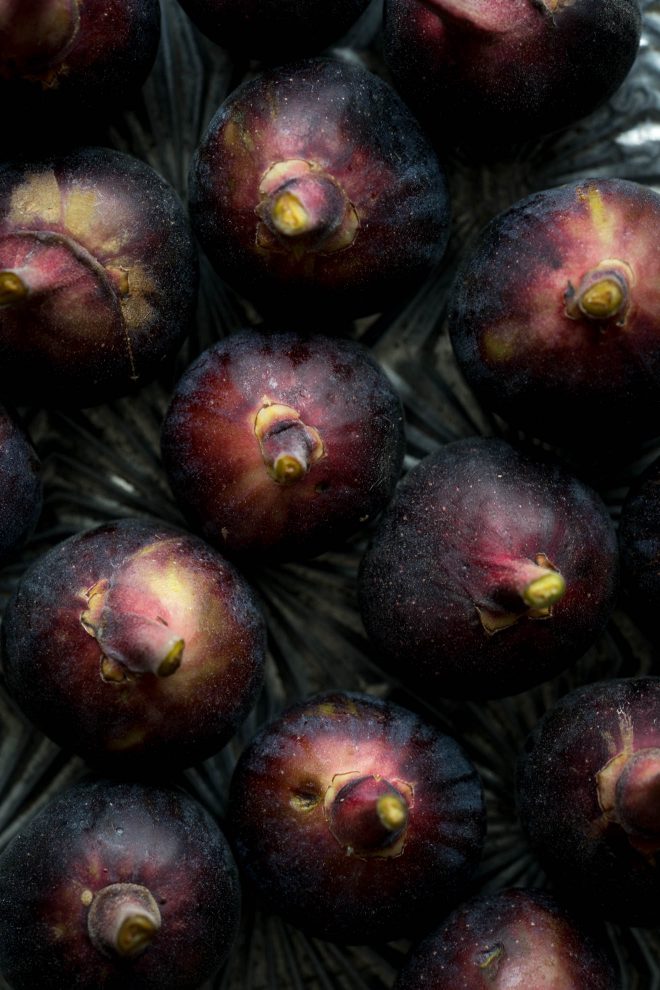
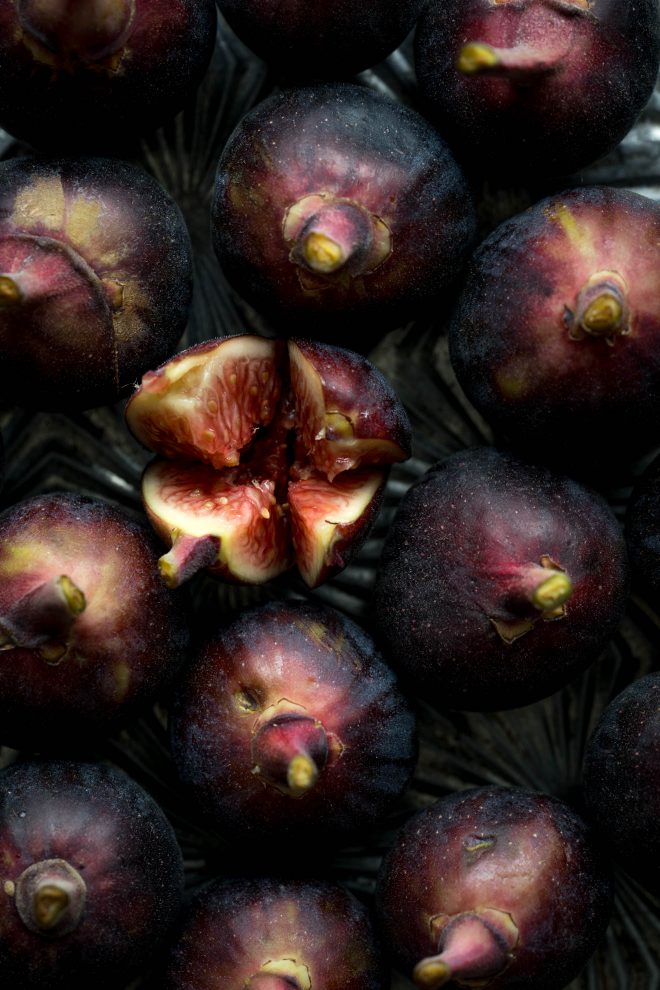
Such an insightful read. Really love the way you explain with actual examples. Thank you for sharing!
Love this article and love the background used in the orange and pomegranate shot. Is that capture by Lucy? If so do you know which one? Thanks so much
Yes it is! It’s this one, “Caramel Marble” https://www.capturebylucy.com/backdrops/caramel-marble
Amazing pattern for food photography. I just like this and willing to do this.
Hi Lauren, where did you buy the rectangular tray of the last image?
It’s an ovenex tray that I got on ebay 🙂